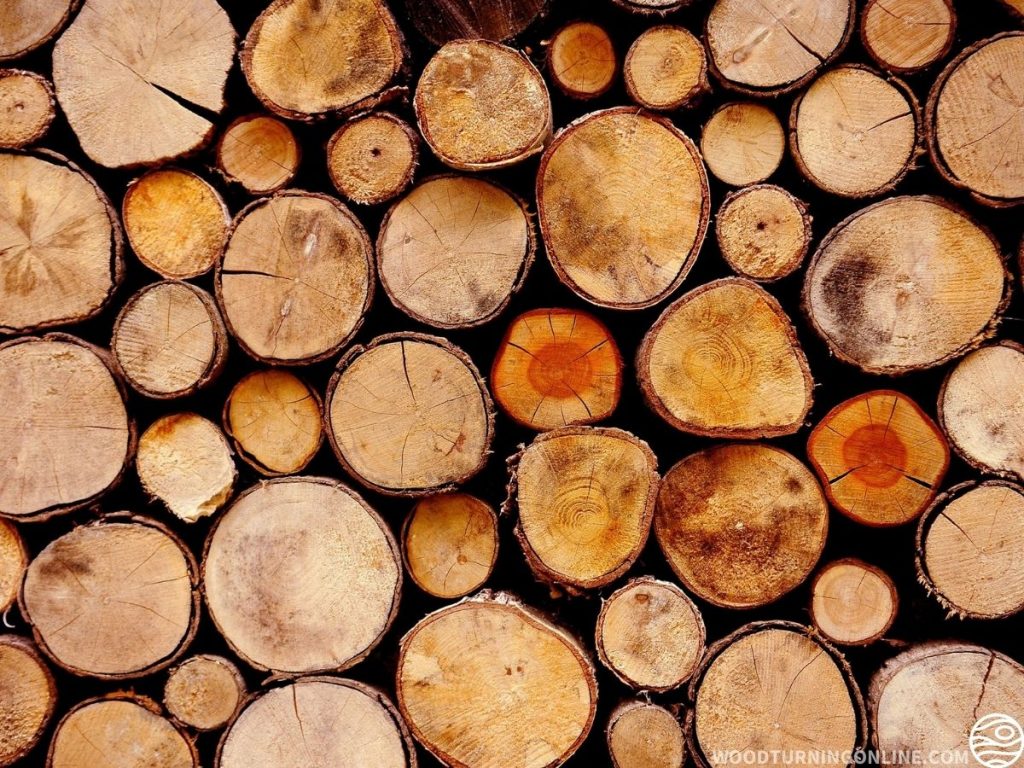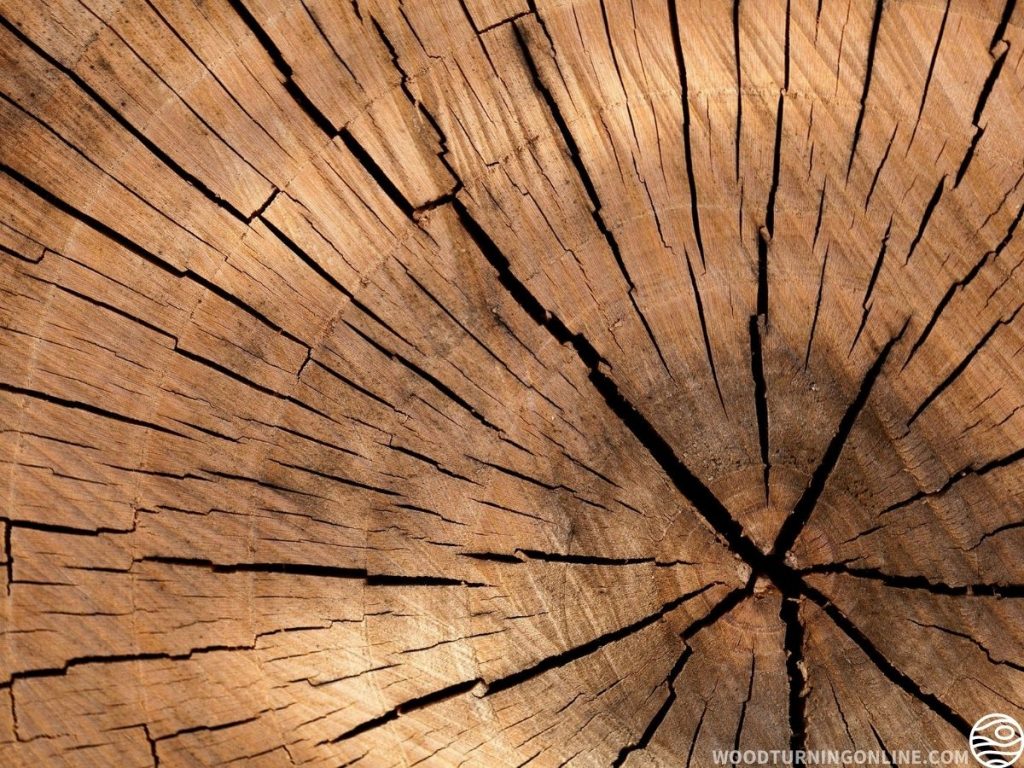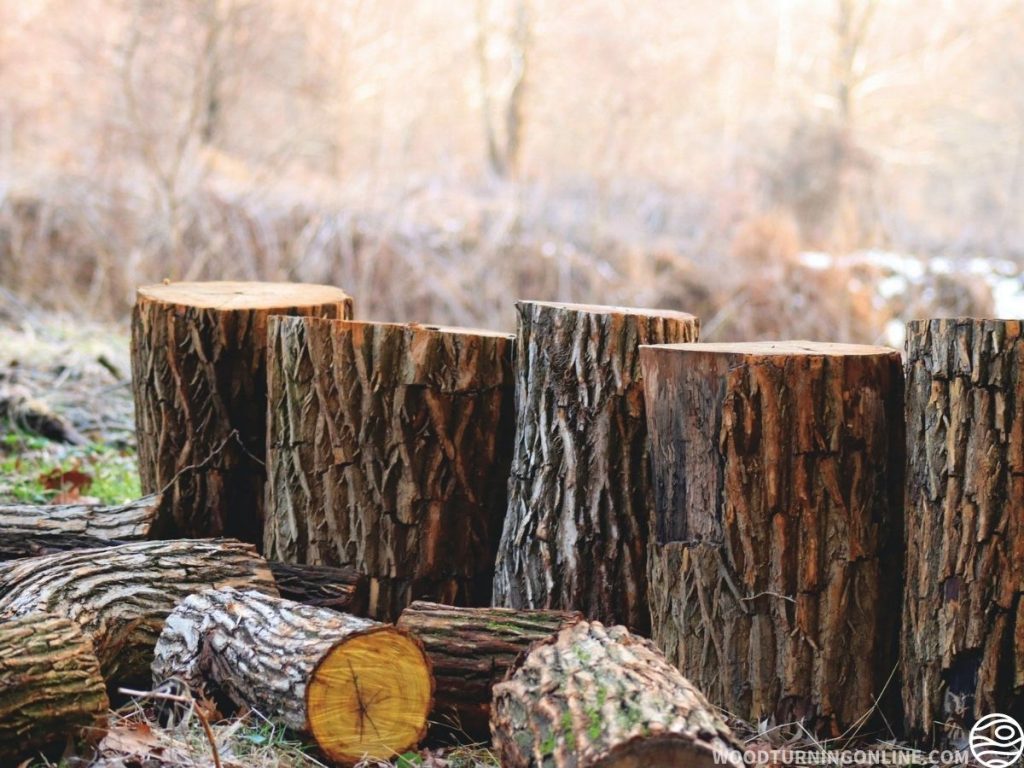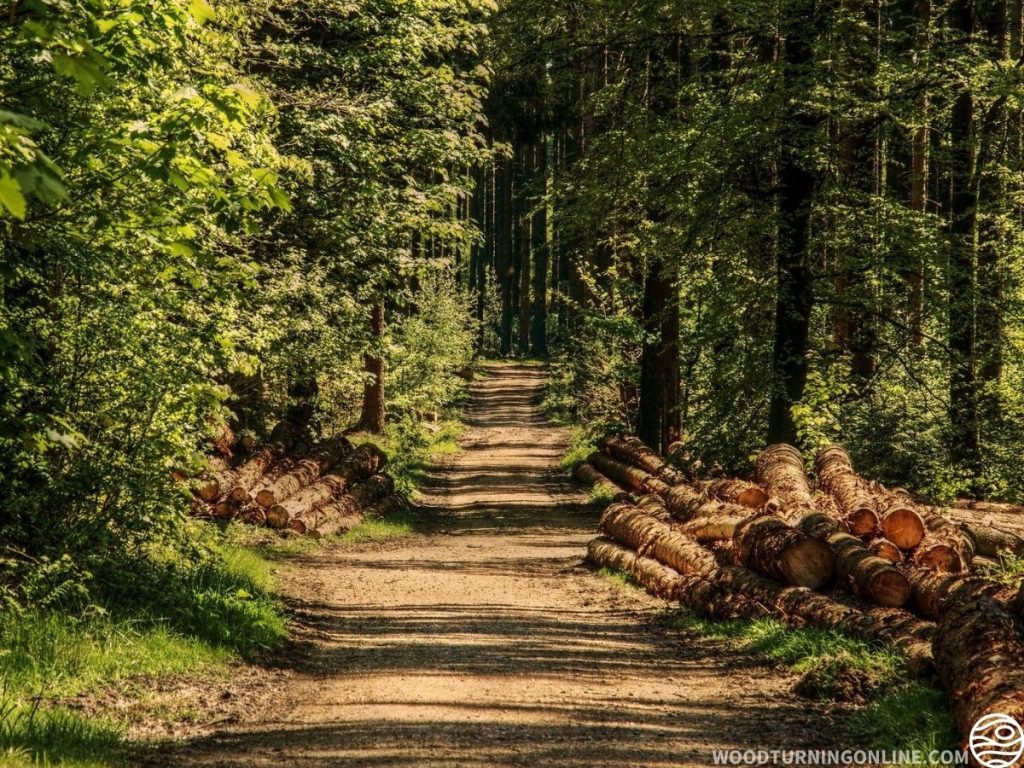In this article, we go over the whole dry vs. green wood deal and explain how this applies to woodturning. You need to keep this in mind when you choose your blanks.
Let’s get started.
Table of Contents
- Who Cares About Dryness of Wood?
- How to Determine Ideal Moisture Content before Turning Wood
- Determining the Ideal Level of Dryness: The Traditional Technique
- How to Use the Wood Moisture Meter
- How Dry Can Wood Be and How to Dry It?
- Why It Is Important to Turn Dry Wood
- What about Turning Green Wood?
- Parting Thoughts
Who Cares About Dryness of Wood?

Whether you want to stain it, burn it or turn it, you must make sure that the pieces of wood you are dealing with are dry enough for the process. That means you must remove the moisture content and there’s quite a lot of that in wood because trees love water. It is used to transport minerals and nutrients across the different parts of the tree.
If the process of turning wood sounds complicated, it is because it sort of is. But fear not. We are here to help you out exactly with those details. Like Jessica Jones would say: [Let’s] start at the beginning.
How to Determine Ideal Moisture Content before Turning Wood
We begin by determining what is the ideal moisture content for the task at hand. This is a mathematical calculation. Typically, your piece of wood contains anywhere from 7-19 percent of EMC or equilibrium moisture content.
EMC is the measure of the moisture content of the wood at a specific level of relative humidity (RH). At this point, the moisture content stays stable. You can measure the EMC of a piece of wood by dividing the RH percentage by five. Now, the EMC percentage window is so wide because you must also take the relative humidity of the region into account.
EMC = RH (in percentage)/5
The margin of error for EMC calculations is plus or minus two percent for those in the US. Now, if you are looking at woodworking projects like building furniture, art pieces, and musical instruments, the piece of wood must have 6-8 percent moisture content.
And yes, once again, you must take the humidity into account. So, if an interior region has 40-52 percent RH, the average EMC of the wood from there will be 8-9 percent, according to a chart from Wood Handbook: Wood as an Engineering Material.
Good woodworkers always take the environment into account. So, if we take the above numbers into account for a project that requires building a cabinet, that piece of wood must be dried till its moisture content stabilizes at 8-9 percent.
And it should stay so during the construction too. Now, how do you know when it is at the ideal moisture content? It’s not an estimate. You use a moisture meter to measure it and we’ll tell you how in a minute.
Determining the Ideal Level of Dryness: The Traditional Technique

The traditional way to determine the perfect level of dryness before you put the piece of wood to good use is to start by storing it in a humid room. You will notice in a few days that the wood might look deformed or bloated because it would have absorbed a good deal of water.
Now, if you’re dealing with green wood, the opposite comes true as you would expect. Put it in a room with low humidity and in a few days, it will turn into dry wood. The math for green wood is to dry it this way for a year for every inch of thickness.
But that’s too long, especially if you’re doing this in a humid region. So, you must find other ways. Before we dive into that, let’s take a look at how to use a moisture meter, as promised above.
How to Use the Wood Moisture Meter
If you have a lot of experience doing this, you are probably good at estimating the numbers based on the age and feel of the piece of wood. But if you’re doing this professionally, you want to be as accurate as possible. And using tools is the way to go about it. No shame in it.
That can be done with a moisture meter. Now, there are two types of moisture meters—pinless and pin type.
A pinless model has a sensor pad that must be in contact with the piece of wood for you to be able to take the reading. It has the ability to measure the moisture content up to 0.25 inches into the piece. If you’re going deeper, you can expect to go up to 0.75 inches.
The sensor pads in these meters are usually placed on the surface of the wood and they interact with the electromagnetic frequency by creating an electromagnetic field under the sensors.
These impulses can be affected by the moisture content in the wood. And you get a percentage reading off the movement of the waves. Also called non-damaging meters, these machines are good if you don’t want to puncture the surface of the wood. The reading can be affected by the density of the wood, as you’d imagine but they are good with a range of woods.
A pin-type, on the other hand, has two metal pins that must go into the piece of wood for the measurement. This is the recommended model because it can work with resistance technologies because it runs electric current in the space between the two metal pins.
The resistance reading tells you how moist a piece of wood is based on conductivity. So, if the resistance is more, the wood is dry and it is measured in percentage. The composition of the wood can affect the accuracy but not the density. But you must insert the pins properly.
How Dry Can Wood Be and How to Dry It?
Here’s a post we’ve written on how dry wood can be and how to dry it.
Why It Is Important to Turn Dry Wood

Now, it is important to dry wood before you turn it because dry wood is more consistent. It is a better choice especially for professional woodworking jobs because it is easy to predict the way the wood turns. Add to that, the final product will hold its shape the way you want or expect it to.
You also want to dry wood to avoid cracks in the structure. Then there is contraction, a key factor to keep in mind when dealing with wood. Green wood is likely to contract by volume whether you dry it before or after turning it.
That’s just something you must live with. And this also causes cracking. But if your project involves fitting multiple pieces of wood that have a low resistance to contraction, you must use dry wood so that the contractions don’t mess up the overall structure.
Imagine having to make a piece of furniture by fitting three or four pieces and you choose green wood. Each piece contracts with changes in the weather and that will mess up all the joints.
That’s not helpful irrespective of whether it is decorative or functional. Woodworkers get a superior product to work with if the wood is burnt in a kiln. Here are a few things to remember.
- Color: If you’re working with dark-colored wood, they might lose their color. But the light ones like maple, pecan and holly hang on to their shade when you put them in a kiln.
- Cost: If you dry it in a kiln, you can charge more for the wood. But you must time it right because the volume decreases by 5-6 percent depending on the type of wood. But it is lighter than green wood and is cheaper to ship.
- Turning: Dry wood is a bit tougher to turn than green wood. There will be sawdust and the tools get hotter due to the friction which is uncomfortable if you’re working with bare hands. You will also need to sharpen wood dried in a kiln more often.
- Availability: Pieces of wood dried in a kiln are not always easily available. That’s because during the process, some pieces of wood also tend to develop defects. They will dry easily if they are under two inches thickness but if it is three inches or more, you’ll have trouble. If it is more than four inches thick, it is nearly impossible to dry the blank without defects.
Now, we also know that it is tougher to burn wet wood. If you’ve ever gone camping and tried it, you would know this. But wet wood in this context does not mean wood that is moist on the surface. We are talking about the amount of moisture inside the wood.
Dry wood is a great source of energy that can be used, for example, for tasks like heating your home. That is because there is lesser water inside the wood and in the process of heating, there is a smaller quantity of water to get rid of. When a piece of wood has a lot of moisture, it does not let the wood burn hot.
Wet wood also creates a lot of smoke, something you don’t ever want. That’s why you want to dry wood more often than not. Now let’s look at the pros and cons of the process.
Pros
There are four clear benefits to turning dry wood.
- You end up saving time after the job is done if you dry it before starting the process. All you need to do after that is to varnish and polish it.
- Since the shape of the wood doesn’t change, turning dry wood is a good step for beginners.
- Dry wood retains the features of turned wood when compared to green wood. So, once you have it dried, you can work on the finer details of the final product.
- You don’t have to worry about contractions and cracks.
Cons
While turning dry wood is a recommended practice, it is not without three very clear drawbacks.
- You need to buy dry blanks or dry your own stock. It takes time, but with a little preparation you can do it. You just need to know how. Here’s a nifty guide on how to convert an old fridge into a kiln.
- The process leaves you with a lot of sawdust which means you must take a lot of precautions like wearing masks and doing this in a ventilated space. This can be challenging in highly humid regions.
What about Turning Green Wood?

Then there are the pros and cons of turning green wood. To begin with, green wood is not a great choice for beginners. Despite that, if you’ve gone through the process of turning with dry wood, you might actually enjoy working with green wood. Here are four reasons why.
Pros of Turning Green Wood
- It is softer compared to dry wood which means there will be relief in the physical process. You can rough up those blanks quite easily.
- You can chop it from a felled tree and turn it right away. That means it takes relatively less time and you can get to work whenever you have an idea instead of waiting.
- Green wood also has a lot of natural features retained which means you can create fresh designs that might look but organic. This does not happen with dry wood.
- Green wood is also cheaper. In fact, it can be free of cost if you’ve managed to get some from fallen trees.
Cons of Turning Green Wood
But, as mentioned above, apart from not being a great choice for beginners, there are a few other disadvantages with green wood. Here are four of them.
- Products made of green wood (even when turned) are more likely to crack if they are not dried well.
- They are also likely to change shape and form which can mess with the outcome you were hoping for. For instance, if you wanted to make a round wooden bowl, it might become oval after you’re done. No one wants that kind of unpredictability.
- There’s also the contraction to take into account. This changes from wood to wood but overall, it is a common occurrence and you can’t really do anything, especially in regions with extreme climates and/or varying humidity.
- It is not great for beginners but if you can figure out how to mix it with dry wood, you might be able to work something out. But that needs expertise. One way to do it is to allow the piece of wood to dry after roughing it up.
Parting Thoughts
There’s quite a few things to know before you get started on any kind of woodwork, right? Hopefully, you now have your bases covered.
